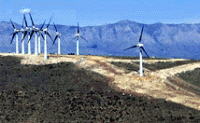By Thomas Sowell, Senior Fellow at the Hoover Institution, Stanford University
It has almost become something of a joke when some “global warming” conference has to be cancelled because of a snowstorm or bitterly cold weather. But stampedes and hysteria are no joke—and creating stampedes and hysteria has become a major activity of those hyping a global warming “crisis.” They mobilize like-minded people from a variety of occupations, call them all “scientists” and then claim that “all” the experts agree on a global warming crisis. Their biggest argument is that there is no argument.
A whole cottage industry has sprung up among people who get grants, government agencies who get appropriations, politicians who get publicity and the perpetually indignant who get something new to be indignant about. It gives teachers something to talk about in school instead of teaching. Those who bother to check the facts often find that not all those who are called scientists are really scientists and not all of those who are scientists are specialists in climate. But who bothers to check facts these days?
A new and very different conference on global warming will be held in New York City, under the sponsorship of the Heartland Institute, on March 2nd to March 4th—weather permitting. It is called an “International Conference on Climate Change.” Its subtitle is “Global Warming: Truth or Swindle?” Among those present will be professors of climatology, along with scientists in other fields and people from other professions. They come from universities in England, Hungary, and Australia, as well as from the United States and Canada, and include among other dignitaries the president of the Czech Republic. There will be 98 speakers and 400 participants. The theme of the conference is that “there is no scientific consensus on the causes or likely consequences of global warming.”
The bigger problem is that this has long since become a crusade rather than an exercise in evidence or logic. Too many people are too committed to risk it all on a roll of the dice, which is what turning to empirical evidence is. Those who have a big stake in global warming hysteria are unlikely to show up at the conference in New York, and unfortunately that includes much of the media. Read more of the op ed here.
By the Scientific Alliance
The innovation which enabled every other aspect of human development was farming. There is nothing natural about clearing land and growing crops which have been bred to meet our own criteria and cannot survive in the wild. Whether they are grown intensively, organically, even bio-dynamically, is very much of secondary importance. We tend to forget this, because agriculture is so pervasive that it seems “natural”. In clearing forests we have changed the ecological balance completely, favouring some species and disadvantaging others. We would certainly not consider skylarks as native birds in the UK if farmers did not provide a suitable habitat.
But we are still wary of new developments in farming, perhaps because the pace of change has accelerated so much. Now, research reported by scientists from the University of California in San Diego and the University of Helsinki gives promise that drought-tolerant crop plants could become a reality. They have discovered the mechanism by which plants control the opening of leaf pores (stomata). Closing them at times of water stress could increase the chances of surviving drought, and probably help to make use of irrigation water more efficient.
The researchers also found that the stomata close to protect the plant from damage when ozone levels rise, but at the same time this reduces the ability of carbon dioxide to be absorbed and so reduces overall photosynthetic efficiency. This is important because, other things being equal, higher levels of atmospheric carbon dioxide increase plant growth. The ability to influence plant growth and water use by genetic modification could yield enormous benefits in both industrialised and developing countries. Nevertheless, there will be those who resist the introduction of such crops. This is part of the Scientific Alliance Weekly Newsletter available here.
Icecap Note: Similarly this story in Science-A-Go-Go told of news in the Proceedings of the National Academy of Sciences of a new genetically modified (GM) tomato plant that can thrive in drought conditions. The research team, from Texas A&M University, modified tomato plants to over-express the gene AVP1, which resulted in stronger, larger root systems that made better use of limited water.

This may become more important because if the Pacific is cooling and we are returning to a colder era like the 1950s to 1970s, drought will become more prevalent in some key growing regions.
By Reuters, Houston
A drop in wind generation late on Tuesday, coupled with colder weather, triggered an electric emergency that caused the Texas grid operator to cut service to some large customers, the grid agency said on Wednesday. Electric Reliability Council of Texas (ERCOT) said a decline in wind energy production in west Texas occurred at the same time evening electric demand was building as colder temperatures moved into the state. The grid operator went directly to the second stage of an emergency plan at 6:41 PM CST (0041 GMT), ERCOT said in a statement.
System operators curtailed power to interruptible customers to shave 1,100 megawatts of demand within 10 minutes, ERCOT said. Interruptible customers are generally large industrial customers who are paid to reduce power use when emergencies occur. No other customers lost power during the emergency, ERCOT said. Interruptible customers were restored in about 90 minutes and the emergency was over in three hours. ERCOT said the grid’s frequency dropped suddenly when wind production fell from more than 1,700 megawatts, before the event, to 300 MW when the emergency was declared. In addition, ERCOT said multiple power suppliers fell below the amount of power they were scheduled to produce on Tuesday. That, coupled with the loss of wind generated in West Texas, created problems moving power to the west from North Texas.

Texas produces the most wind power of any state and the number of wind farms is expected to increase dramatically as new transmission lines are built to transfer power from the western half of the state to more populated areas in the north. Read more here.
Icecap Note: See a very thorough analysis of the “Observed Climate Change and the Negligible Global Effect of Greenhouse-gas Emission Limits in Texas” by SPPI here.


